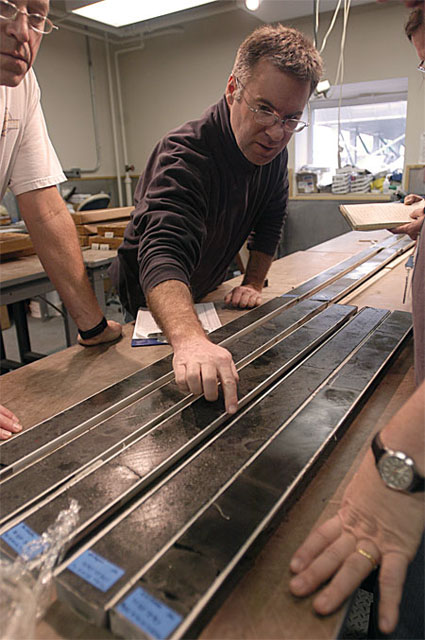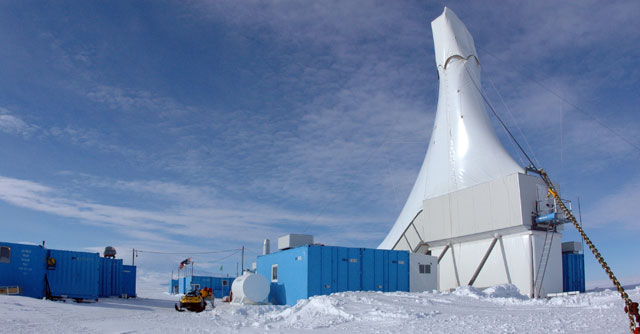|
A far different placePlant fossils from ANDRILL sediment cores shed new light on warmer AntarcticaPosted June 22, 2012
Ancient Antarctica was warmer and wetter than previously suspected, enough to support vegetation along its edges, according to a new study. Researchers came to that conclusion by examining the remnants of plant leaf wax found in sediment cores taken from below the seafloor in McMurdo Sound in the Ross Sea region of Antarctica in 2007 during the two-year ANtarctic Geological DRILLing Program (ANDRILL) The $30 million ANDRILL program was one of the premiere projects of the International Polar Year Scientists from the University of Southern California (USC) This occurred during a period of global warming in the middle Miocene epoch that coincided with increased levels of atmospheric carbon dioxide. “This is some of the first evidence of just how much warmer it was,” said Sarah J. Feakins 
Photo Credit: Peter West/Antarctic Photo Library
Scientists examine a section of sediment core from the ANDRILL project.
Scientists began to suspect that high-latitude temperatures during the middle Miocene were warmer than previously believed when Sophie Warny Fossils of plant life in Antarctica are difficult to come by because the movement of the massive ice sheets covering the landmass grinds and scrapes away the evidence. “Deep sea cores are ideal to look for clues of past vegetation, as the fossils deposited are protected from ice-sheet advances, but these are technically very difficult to acquire in the Antarctic and require international collaboration,” said Warny, assistant professor of palynology at LSU, in the USC press release Tipped off by the tiny pollen samples from the 2009 study, the researchers opted to look at the remnants of leaf wax taken from the ANDRILL sediment cores for clues. Leaf wax acts as a record of climate change by documenting details about the hydrogen isotope ratios of the water the plant drank while it was alive. Jung-Eun Lee The peak of Antarctic greening during this time period, known as the middle Miocene, occurred between 16.4 and 15.7 million years ago when mostly modern-looking animals such as three-toed horses, deer and camel roamed Earth. Various species of apes also existed, though modern humans did not appear until 200,000 years ago. Warm conditions during the middle Miocene are thought to be associated with carbon dioxide levels, probably around 400 to 600 parts per million (ppm). In 2012, carbon dioxide levels have climbed to 393 ppm, the highest they’ve been in the past several million years. At the current rate of increase, atmospheric carbon dioxide levels are on track to reach middle Miocene levels by the end of this century. The ultimate goal of the study was to better understand what the future of climate change may look like, Feakins said. “Just as history has a lot to teach us about the future, so does past climate: what this record shows us is how much warmer and wetter it can get around the Antarctic ice sheet as the climate system heats up.” |



For USAP Participants |
For The Public |
For Researchers and EducatorsContact UsU.S. National Science FoundationOffice of Polar Programs Geosciences Directorate 2415 Eisenhower Avenue, Suite W7100 Alexandria, VA 22314 Sign up for the NSF Office of Polar Programs newsletter and events. Feedback Form |


